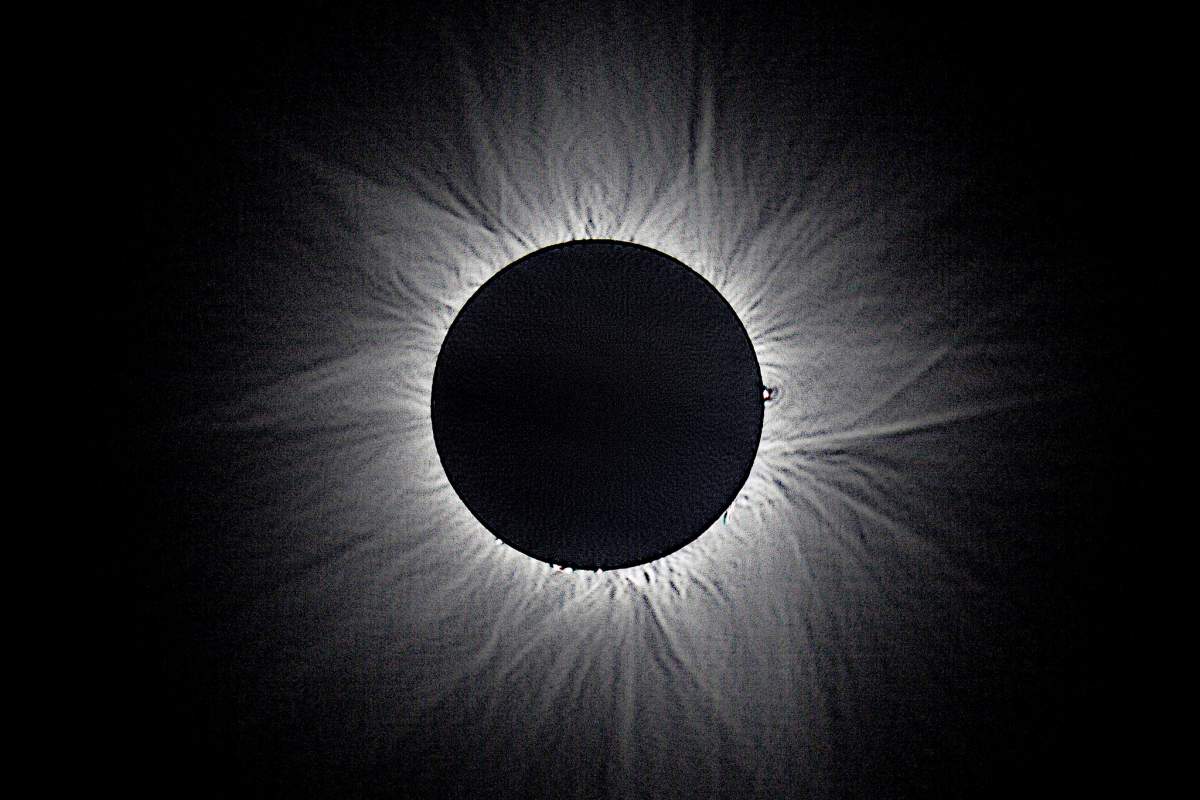
The first in our eclipse series
 The last total solar eclipse that could be viewed in the United States was in 1918. On August 21st 2017, there's a very narrow band in the United States that will be able to see a full solar eclipse. It extends across the coasts of the continental United States from Oregon to South Carolina. In anticipation of this event, A Moment of Science is publishing a series about solar eclipses.
A solar eclipse is when the moon passes between the Earth and the Sun, and blocks out views of the sun. There are four varieties of solar eclipses: partial, annular, hybrid, and total.
Total
A total solar eclipse, like the one that can be viewed in parts of the United States on August 21st, is possible when the moon is at, or close to, perigee. A simple definition of perigee is when the moon is closest to the Earth.
Perigee doesn't just apply to the Earth's moon though. It applies to man-made objects orbiting the Earth, as well as other celestial objects that orbit around each other. It's also only possible to see the complete solar eclipse if someone is in a location in the range of totality where the moon's umbra falls.
The umbra is a name for the moon's darkest shadow. When a total solar eclipse happens, it makes the sun's corona's visible.
This part of the sun, because its light is so dim compared to the light emitted by the sun's photosphere, is usually not visible from Earth. Total solar eclipses are fairly rare: they can only be viewed on Earth approximately every 18 months. The last one that was viewable in the United States was in 1918.
Partial
Those in the United States not living or traveling to areas in the United States with a full view of the eclipse, will have viewing conditions that resemble a partial solar eclipse.
And in fact, one definition of a partial solar eclipse is all of the eclipse viewed outside of the range of totality.
During a partial solar eclipse, the moon still comes between the sun and Earth, but it only partially covers the sun's photosphere (also known as its disk). Instead of being in the moon's umbra, viewers of a partial eclipse are in the moon's penumbra. The penumbra is another lunar shadow, but it's not as dark as the umbra.
Annular
An annular solar eclipse is when the moon still covers the sun, but the sun is still visible and appears to create a ring around the moon. This can happen when the moon is in apogee, the time when it is farthest away from the Earth.
But it can also occur when there's almost a perfect line between the sun, the moon, and the Earth. Or when there's a new moon (when the sun and moon are aligned) and the sun and moon are on opposite sides of the Earth.
The sun's corona isn't visible like it is with a total or partial eclipse. Because the moon appears smaller than the sun, the parts of the sun that are still visible are too bright for the sun's corona to be viewed.
Hybrid
A hybrid solar eclipse is also sometimes referred to with the much longer name total/annular eclipse. This kind of eclipse is rare and depends on a viewer's location.
In one location, a person will be able to see a total solar eclipse with a visible corona, while a viewer in a different location will view this same eclipse as annular without the sun completely covered.
This happens because of the Earth's curve and where the moon's umbra falls.
Stay tuned for further posts in our 2017 Solar Eclipse series. You can follow us on twitter to stay up to date.
Sources And Further Reading:
- Young, Alex. Debebe, Asidesach. "NASA Total Eclipse 2017 Website." Accessed July 24, 2017.
- Kamanew, Eugen. "A Hybrid Solar Eclipse Over Kenya." Astronomy Picture of The Day: July 24, 2017. Accessed July 24, 2017.
- "What Is A Hybrid Solar Eclipse?" Time And Date. Accessed July 24, 2017.
- "Types of Solar Eclipse." Accessed July 24, 2017.
- Sharp, Tim. "2017 Moon Phases Calendar." Space.com. December 20, 2016. Accessed July 24, 2017.









